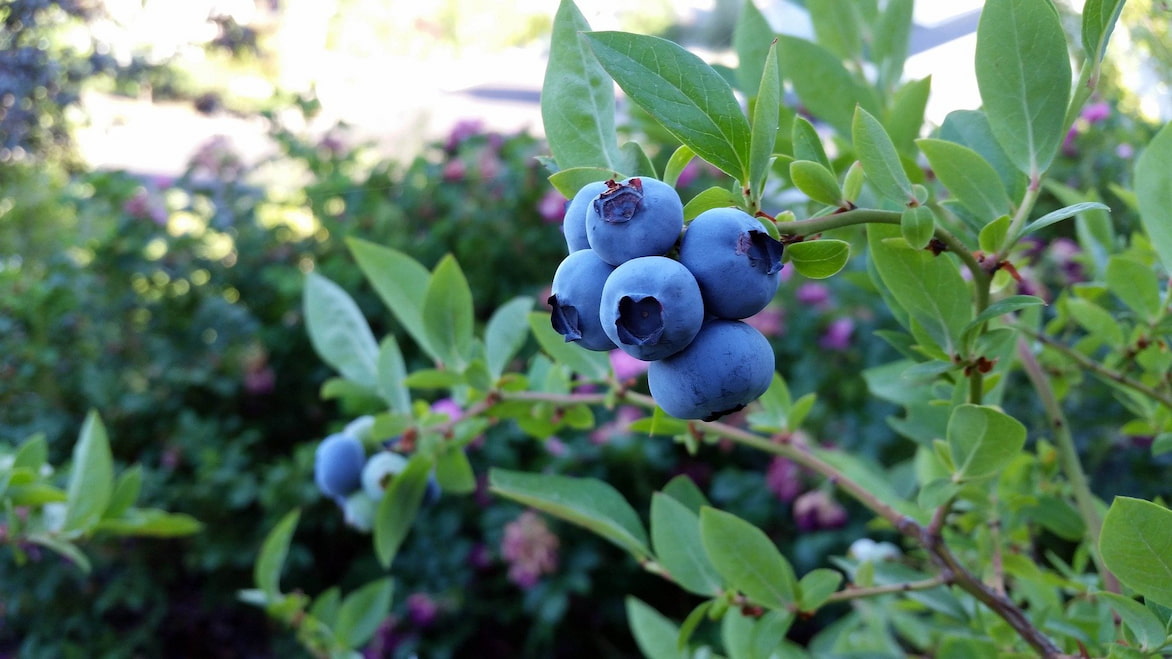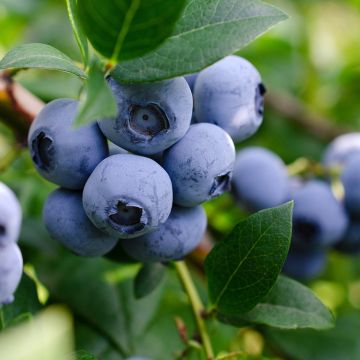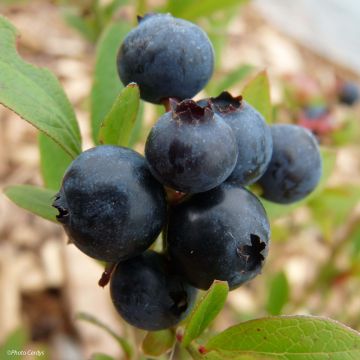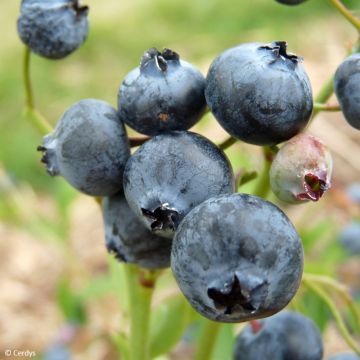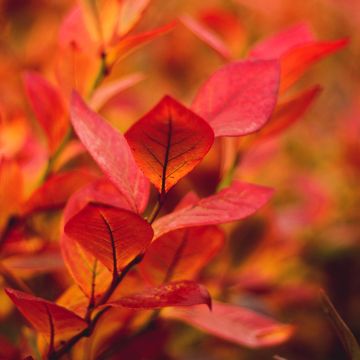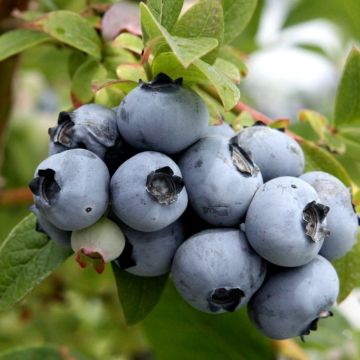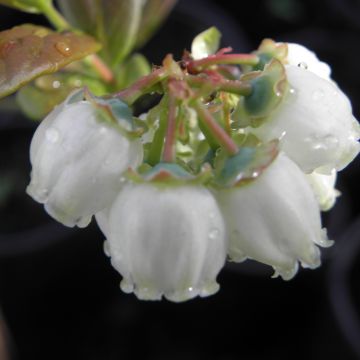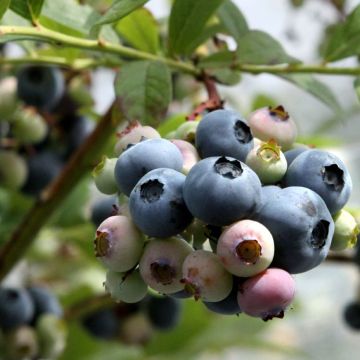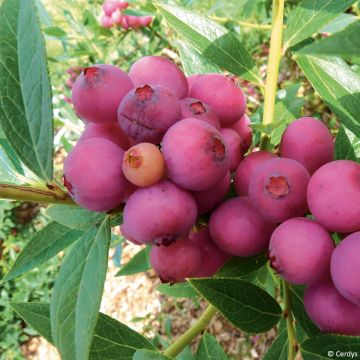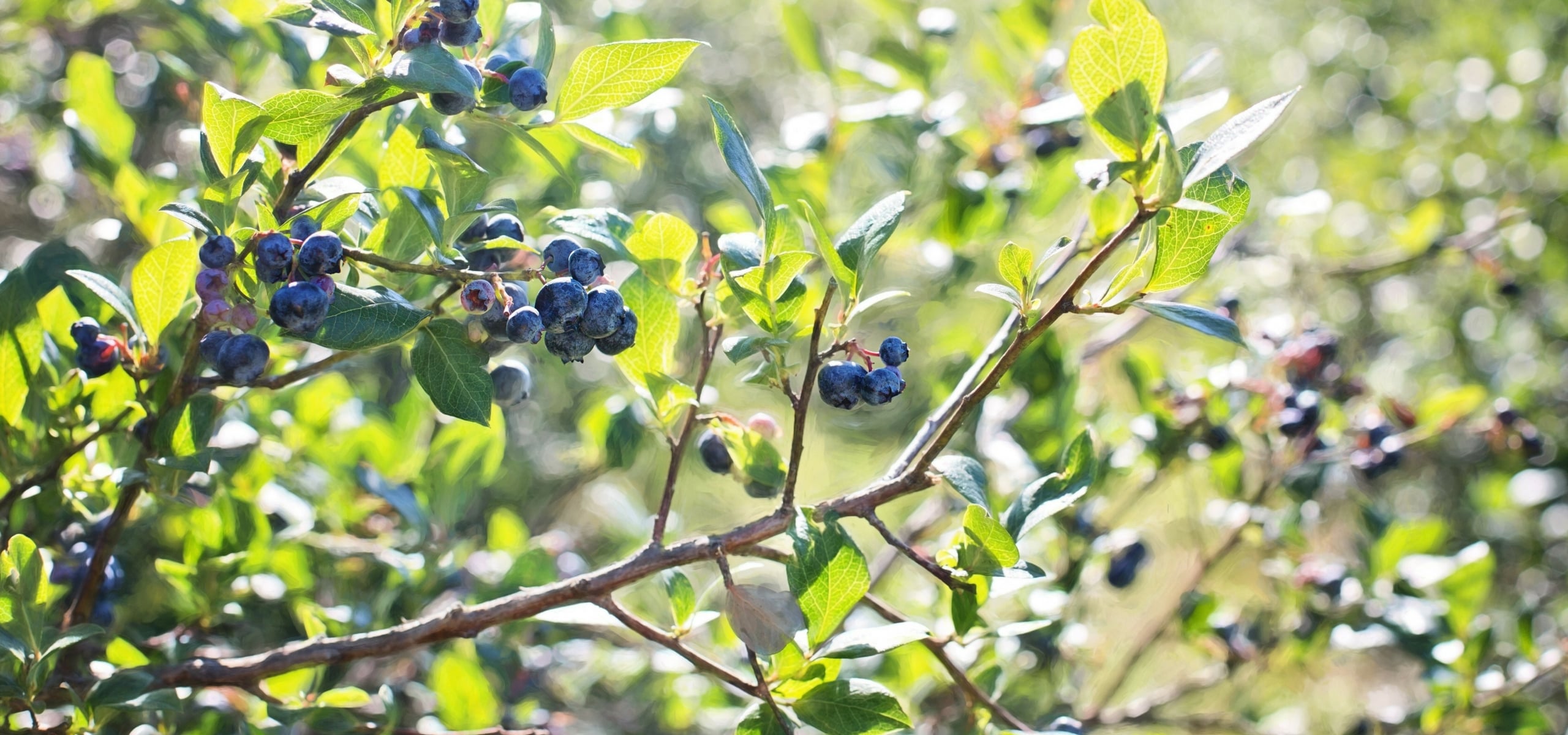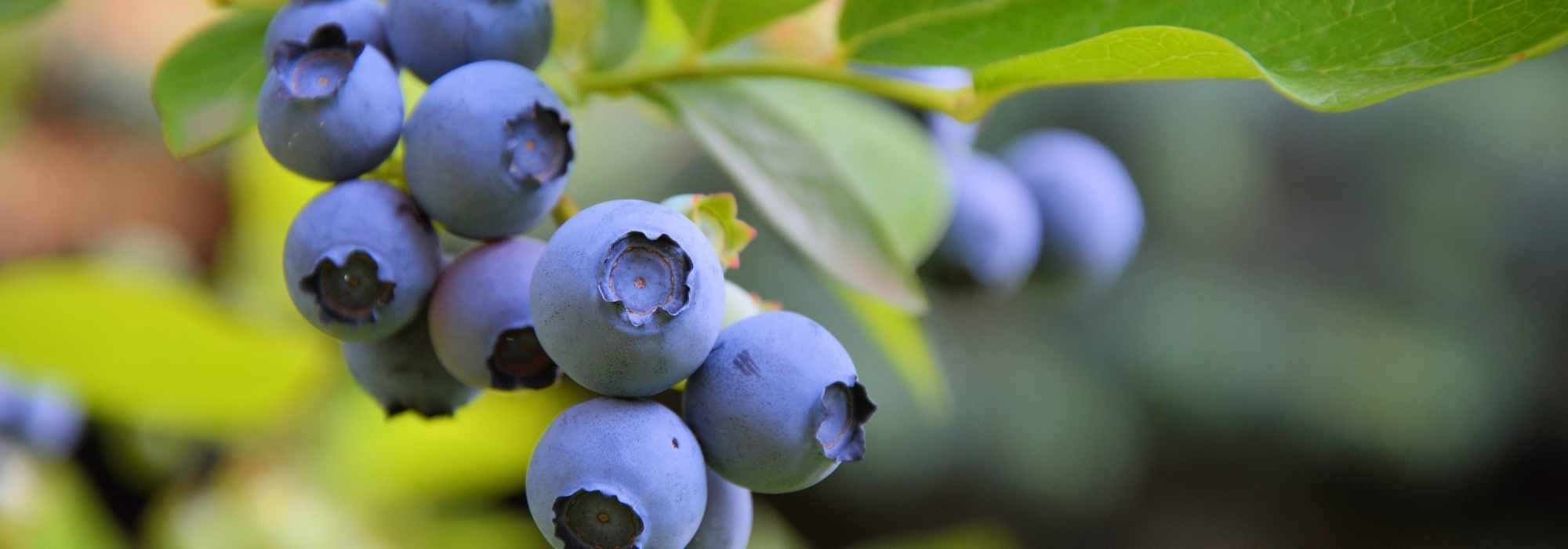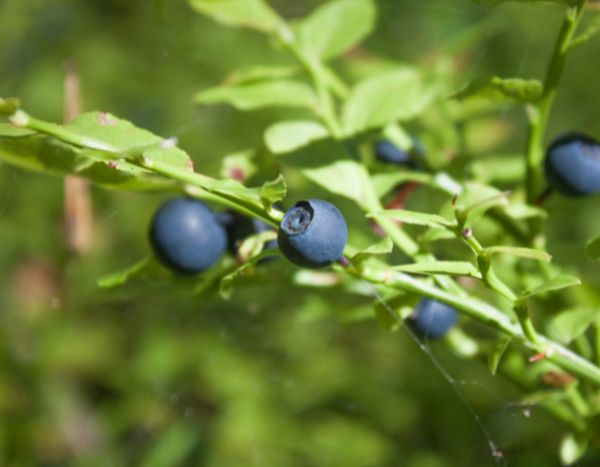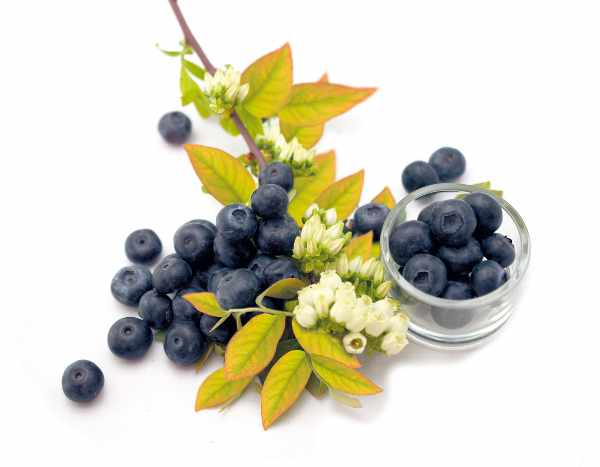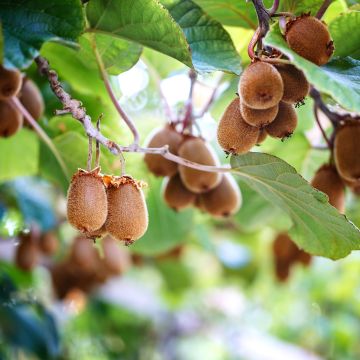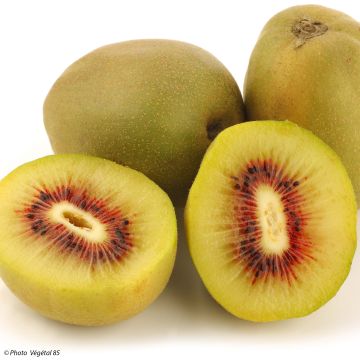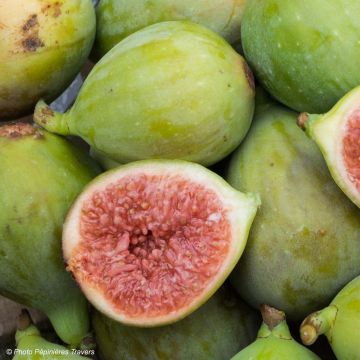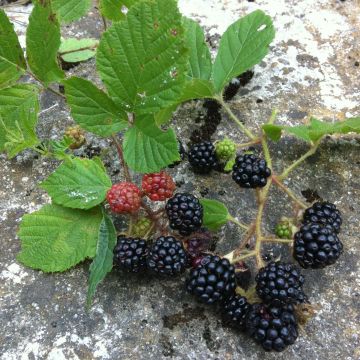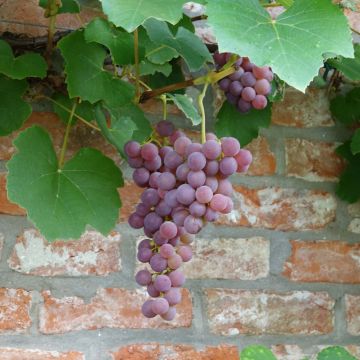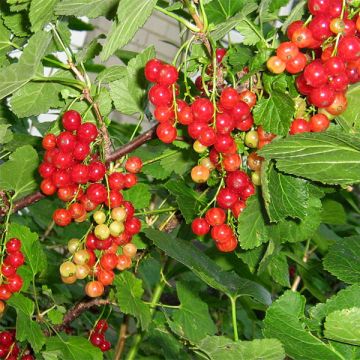

Vaccinium corymbosum Brigitta- American Blueberry
Vaccinium corymbosum Brigitta- American Blueberry
Vaccinium corymbosum Brigitta
American Blueberry, Highbush Blueberry
Emballage parfait, plant en bon état, très satisfait... à voir la suite
Henri, 11/10/2022
Special offer!
Receive a €20 voucher for any order over €90 (excluding delivery costs, credit notes, and plastic-free options)!
1- Add your favorite plants to your cart.
2- Once you have reached €90, confirm your order (you can even choose the delivery date!).
3- As soon as your order is shipped, you will receive an email containing your voucher code, valid for 3 months (90 days).
Your voucher is unique and can only be used once, for any order with a minimum value of €20, excluding delivery costs.
Can be combined with other current offers, non-divisible and non-refundable.
Home or relay delivery (depending on size and destination)
Schedule delivery date,
and select date in basket
This plant carries a 6 months recovery warranty
More information
We guarantee the quality of our plants for a full growing cycle, and will replace at our expense any plant that fails to recover under normal climatic and planting conditions.
Description
Vaccinium corymbosum 'Brigitta' is a mid-season variety of blueberry with large fruits. Growing relatively slowly, this ramified bush reaches about 1.80 m (6ft) in height. In May, it is covered with small white bell-shaped flowers, which are very decorative against the fairly dark green foliage. These flowers develop into large dark blue berries, which can be harvested in August. Firm and sweet, with a slight acidity, they can be eaten fresh, used in jams, or in desserts. In autumn, the foliage turns beautiful shades of red. Resistant to cold weather, this variety is relatively easy to grow in non-calcareous soil and requires little maintenance. In all blueberry plants, fruiting is even more abundant if another variety is planted nearby.
The Blueberry belongs to the family of Ericaceae, mostly known in gardens for its many ornamental genera. Besides the well-known Rhododendrons and Heathers, it also includes other valuable plants such as Pieris, Kalmia, Enkianthus, Gaultheria, and Oxydendrum. But there are also Ericaceae with edible fruits, mainly the Arbutus and the genus Vaccinium, which includes blueberries, cranberries, and lingonberries. The lowbush blueberry (Vaccinium corymbosum), native to North America, is the one cultivated in gardens for its abundant and high-quality fruit production. It is an extremely hardy bush with deciduous foliage, which falls in autumn. It is easy to grow in very acidic soil (not tolerant of limestone), in a semi-shaded position, for example in the morning sun.
The cultivar 'Brigitta' is an Australian horticultural achievement suitable for mechanical harvesting due to its firm fruits. It is a relatively slow-growing bush that stands out for its well-ramified habit and large dark blue fruits. With a fairly upright habit, this bush reaches about 1.80 m (6ft) in height and 0.80 m (3ft) in width. The deciduous foliage consists of fairly dark green elliptical and pointed leaves. Its upright branches take on beautiful autumnal colours, in shades of red and even orange, giving it true ornamental value. This is enhanced by its charming flowering, when in May this bush is covered with small white bell-shaped flowers. These flowers with fused petals (or gamopetalous) closely resemble those of other purely ornamental Ericaceae such as Pieris, well-known small shrubs. In Brigitta, these flowers develop into large dark blue blueberries, sweet, fragrant, and slightly acidic. They can be harvested during the month of August.
From a nutritional standpoint, it is worth noting that blueberries are low in calories but high in nutritional value: they are very rich in vitamins A, B, and C, calcium, and iron. They contain pigments (anthocyanins) that improve night vision. Brigitta blueberries can be consumed freshly picked, in desserts, cooked, or in jams. The fruit can be stored for about ten days after picking and can be frozen for longer preservation (this variety is well-suited for freezing).
Blueberries absolutely cannot tolerate limestone and must be grown in very acidic soil (pH 4 to 5.5). Therefore it will be imperative to plant them in a container if your soil is alkaline, using a substrate composed of ericaceous soil, possibly supplemented with peat. Water them with non-calcareous water (rainwater will be suitable). If your soil is neutral or slightly acidic, you can dig a sufficiently large hole (50 cm (20in) in all directions) and mix some peat or ericaceous soil with the existing soil, along with a bit of compost. This will ensure good living conditions for your Blueberry bush. Very hardy, down to -20°C (-4°F) or lower, this bush appreciates humidity and partial shade in warm climates.
Plant Brigitta alongside other varieties to allow for cross-pollination and thus promote a good harvest. Its decorative flowering, and especially its flamboyant autumn colours, are very interesting aesthetically and lend this bush to being planted among ornamental plants. At the edge of your flowerbed, plant the dwarf Andromeda polifolia Compacta, a delightful creeping shrub with beautiful small pink bells from April to June. To enhance Brigitta's flowering, associate it with one of the many Mountain Laurels, such as Kalmia latifolia Latchmin with its magnificent purple bells. And in the background of the flowerbed, a beautiful Magnolia Galaxy will offer its superb pink flowering for two months, preceding that of your Blueberry bush.
Vaccinium corymbosum Brigitta- American Blueberry in pictures
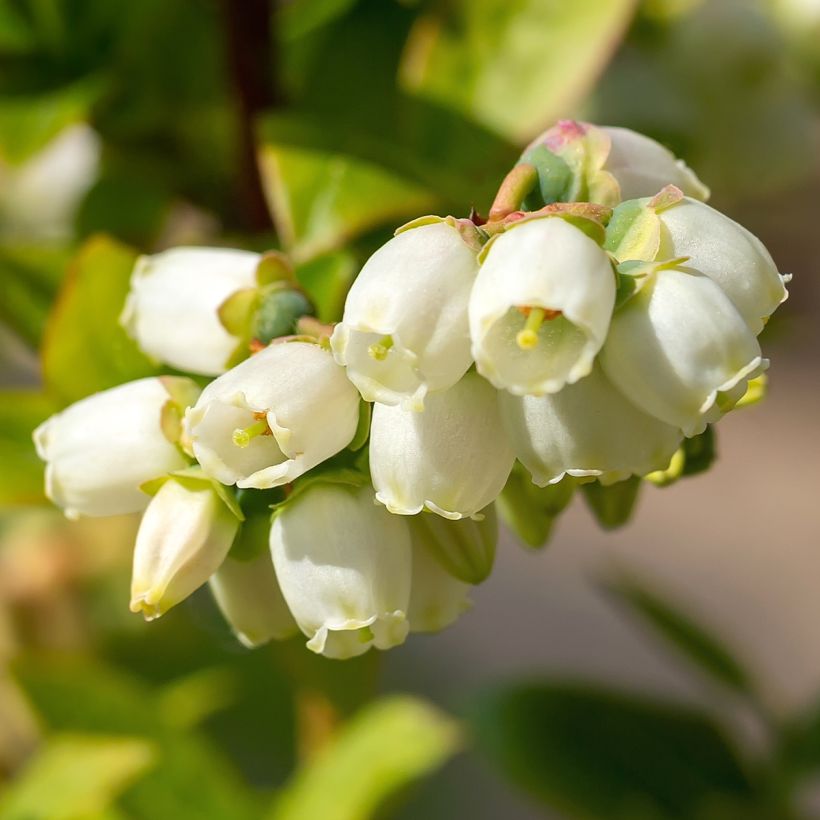

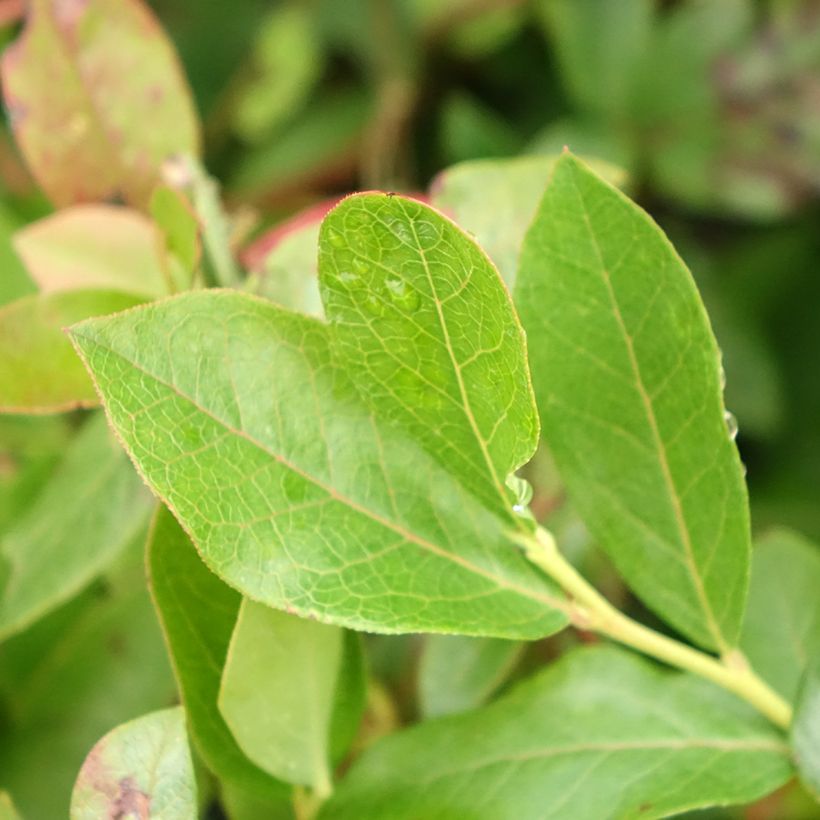

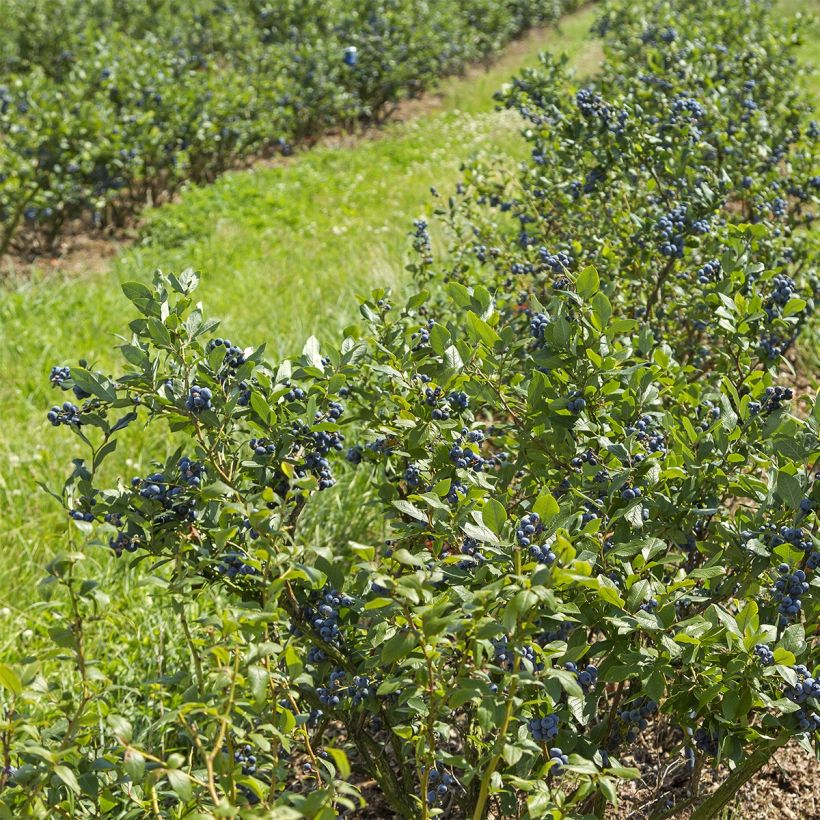



Plant habit
Fruit
Flowering
Foliage
Botanical data
Vaccinium
corymbosum
Brigitta
Ericaceae
American Blueberry, Highbush Blueberry
Cultivar or hybrid
Other Blueberry bush
View all →Planting and care
The planting of the Blueberry Bush ideally takes place in autumn or throughout the year, avoiding frost and heatwaves. This bush should be planted in the sun (not scorching) in cooler regions and strictly in partial shade in hotter southern ones. If you plant multiple bushes, space them 1.20m (4ft) apart in all directions. This Blueberry Bush is very hardy: -20°C (-4°F) and below for the plant, but the flowers can be damaged below -5°C (23°F), and has a particularly long lifespan.
Plant it in a highly acidic soil (pH between 4 and 5.5), incorporating pure ericaceous soil, or in a mixture of regular soil and peat, well-decomposed bark compost. The collar (the point where the trunk meets the roots) should be level with the ground. Firmly press down the soil and water generously with non-limestone water. In slightly calcareous soil, dig a hole 50 to 60cm (20 to 24in) deep, line the edges with garden felt, place a 10cm (4in) layer of non-limestone gravel at the bottom, then fill with a mixture of compost and ericaceous soil.
The soil should remain moist but not waterlogged: the plant tolerates moderate drought and avoids stagnant moisture. If watering is necessary, use non-limestone and non-chlorinated water (e.g. rainwater collection). Mulch the base with shredded bark, straw, or fern leaves. It is sometimes useful to put up a protective net if birds become too greedy during harvest time. In spring, annually apply some well-rotted compost on the surface. The Blueberry Bush is not very susceptible to diseases and pests.
Planting period
Intended location
Care
Planting & care advice
-
, onOrder confirmed
Reply from on Promesse de fleurs
Similar products
Haven't found what you were looking for?
Hardiness is the lowest winter temperature a plant can endure without suffering serious damage or even dying. However, hardiness is affected by location (a sheltered area, such as a patio), protection (winter cover) and soil type (hardiness is improved by well-drained soil).

Photo Sharing Terms & Conditions
In order to encourage gardeners to interact and share their experiences, Promesse de fleurs offers various media enabling content to be uploaded onto its Site - in particular via the ‘Photo sharing’ module.
The User agrees to refrain from:
- Posting any content that is illegal, prejudicial, insulting, racist, inciteful to hatred, revisionist, contrary to public decency, that infringes on privacy or on the privacy rights of third parties, in particular the publicity rights of persons and goods, intellectual property rights, or the right to privacy.
- Submitting content on behalf of a third party;
- Impersonate the identity of a third party and/or publish any personal information about a third party;
In general, the User undertakes to refrain from any unethical behaviour.
All Content (in particular text, comments, files, images, photos, videos, creative works, etc.), which may be subject to property or intellectual property rights, image or other private rights, shall remain the property of the User, subject to the limited rights granted by the terms of the licence granted by Promesse de fleurs as stated below. Users are at liberty to publish or not to publish such Content on the Site, notably via the ‘Photo Sharing’ facility, and accept that this Content shall be made public and freely accessible, notably on the Internet.
Users further acknowledge, undertake to have ,and guarantee that they hold all necessary rights and permissions to publish such material on the Site, in particular with regard to the legislation in force pertaining to any privacy, property, intellectual property, image, or contractual rights, or rights of any other nature. By publishing such Content on the Site, Users acknowledge accepting full liability as publishers of the Content within the meaning of the law, and grant Promesse de fleurs, free of charge, an inclusive, worldwide licence for the said Content for the entire duration of its publication, including all reproduction, representation, up/downloading, displaying, performing, transmission, and storage rights.
Users also grant permission for their name to be linked to the Content and accept that this link may not always be made available.
By engaging in posting material, Users consent to their Content becoming automatically accessible on the Internet, in particular on other sites and/or blogs and/or web pages of the Promesse de fleurs site, including in particular social pages and the Promesse de fleurs catalogue.
Users may secure the removal of entrusted content free of charge by issuing a simple request via our contact form.
The flowering period indicated on our website applies to countries and regions located in USDA zone 8 (France, the United Kingdom, Ireland, the Netherlands, etc.)
It will vary according to where you live:
- In zones 9 to 10 (Italy, Spain, Greece, etc.), flowering will occur about 2 to 4 weeks earlier.
- In zones 6 to 7 (Germany, Poland, Slovenia, and lower mountainous regions), flowering will be delayed by 2 to 3 weeks.
- In zone 5 (Central Europe, Scandinavia), blooming will be delayed by 3 to 5 weeks.
In temperate climates, pruning of spring-flowering shrubs (forsythia, spireas, etc.) should be done just after flowering.
Pruning of summer-flowering shrubs (Indian Lilac, Perovskia, etc.) can be done in winter or spring.
In cold regions as well as with frost-sensitive plants, avoid pruning too early when severe frosts may still occur.
The planting period indicated on our website applies to countries and regions located in USDA zone 8 (France, United Kingdom, Ireland, Netherlands).
It will vary according to where you live:
- In Mediterranean zones (Marseille, Madrid, Milan, etc.), autumn and winter are the best planting periods.
- In continental zones (Strasbourg, Munich, Vienna, etc.), delay planting by 2 to 3 weeks in spring and bring it forward by 2 to 4 weeks in autumn.
- In mountainous regions (the Alps, Pyrenees, Carpathians, etc.), it is best to plant in late spring (May-June) or late summer (August-September).
The harvesting period indicated on our website applies to countries and regions in USDA zone 8 (France, England, Ireland, the Netherlands).
In colder areas (Scandinavia, Poland, Austria...) fruit and vegetable harvests are likely to be delayed by 3-4 weeks.
In warmer areas (Italy, Spain, Greece, etc.), harvesting will probably take place earlier, depending on weather conditions.
The sowing periods indicated on our website apply to countries and regions within USDA Zone 8 (France, UK, Ireland, Netherlands).
In colder areas (Scandinavia, Poland, Austria...), delay any outdoor sowing by 3-4 weeks, or sow under glass.
In warmer climes (Italy, Spain, Greece, etc.), bring outdoor sowing forward by a few weeks.






























